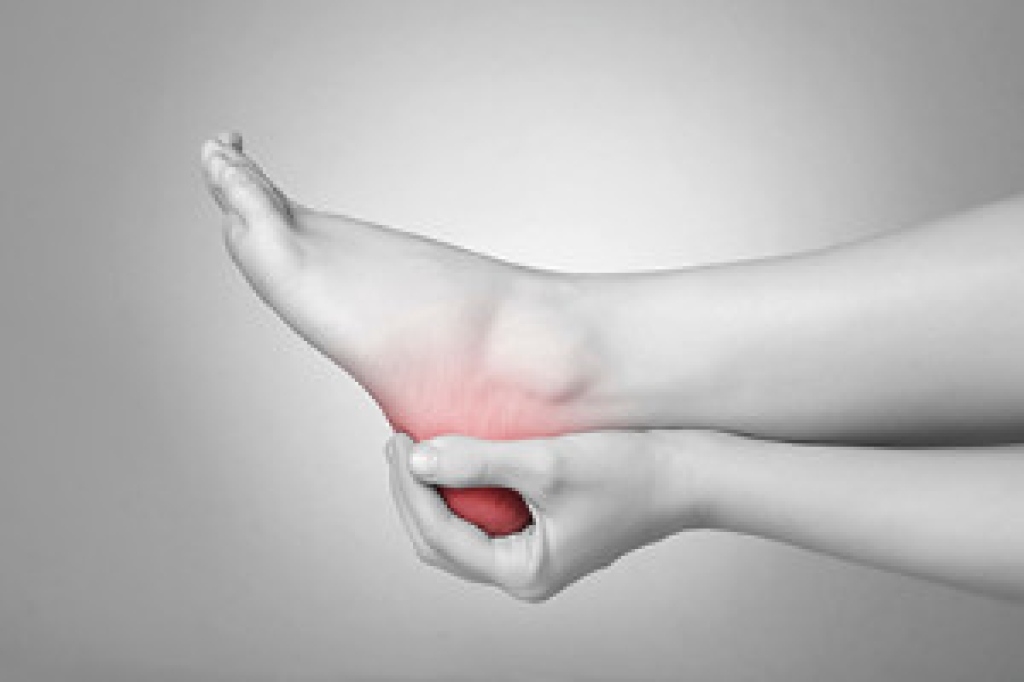Connect With Us
Blog
Blog
How to Fall Proof Your Home and Protect Your Feet

Fall-proofing your home is an important step in preventing injuries, especially foot and ankle problems. Begin by checking the front steps for cracks or uneven surfaces, and ensure good lighting around the front door for safe entry. Installing grab bars near the door provides extra stability. Additionally, use rubber-backed rugs to avoid slipping and always clean spills immediately to reduce hazards indoors. Falls can lead to sprains, fractures, or long-term foot pain. A podiatrist can evaluate injuries, provide treatment, and recommend supportive footwear or orthotics. If you have sustained a foot or ankle injury from falling, it is suggested that you schedule an appointment with a podiatrist who can treat various foot conditions, and guide you on additional fall prevention tips.
Preventing falls among the elderly is very important. If you are older and have fallen or fear that you are prone to falling, consult with the foot specialists from Affiliates in Foot Care, P.C.. Our doctors will assess your condition and provide you with quality advice and care.
Every 11 seconds, an elderly American is being treated in an emergency room for a fall related injury. Falls are the leading cause of head and hip injuries for those 65 and older. Due to decreases in strength, balance, senses, and lack of awareness, elderly persons are very susceptible to falling. Thankfully, there are a number of things older persons can do to prevent falls.
How to Prevent Falls
Some effective methods that older persons can do to prevent falls include:
- Enrolling in strength and balance exercise program to increase balance and strength
- Periodically having your sight and hearing checked
- Discuss any medications you have with a doctor to see if it increases the risk of falling
- Clearing the house of falling hazards and installing devices like grab bars and railings
- Utilizing a walker or cane
- Wearing shoes that provide good support and cushioning
- Talking to family members about falling and increasing awareness
Falling can be a traumatic and embarrassing experience for elderly persons; this can make them less willing to leave the house, and less willing to talk to someone about their fears of falling. Doing such things, however, will increase the likelihood of tripping or losing one’s balance. Knowing the causes of falling and how to prevent them is the best way to mitigate the risk of serious injury.
If you have any questions, please feel free to contact our office located in Woburn, MA . We offer the newest diagnostic and treatment technologies for all your foot care needs.
Stretches to Help Ease Plantar Fasciitis Pain
 Plantar fasciitis is a foot condition that is known for causing intense heel pain. Those affected by this condition often relay feeling discomfort when first getting out of bed in the morning. There are a few stretches you can perform to help ease the pain linked to plantar fasciitis. One of these types of stretches is known as towel scrunches. You can start by sitting and scrunching a towel with both feet. Then, stand and scrunch the towel with your feet. Another exercise you can try involves standing and trying to place a cotton ball into a cup using your toes. For more advice on what stretches and exercises you can practice to help with plantar fasciitis pain, please consult with a podiatrist.
Plantar fasciitis is a foot condition that is known for causing intense heel pain. Those affected by this condition often relay feeling discomfort when first getting out of bed in the morning. There are a few stretches you can perform to help ease the pain linked to plantar fasciitis. One of these types of stretches is known as towel scrunches. You can start by sitting and scrunching a towel with both feet. Then, stand and scrunch the towel with your feet. Another exercise you can try involves standing and trying to place a cotton ball into a cup using your toes. For more advice on what stretches and exercises you can practice to help with plantar fasciitis pain, please consult with a podiatrist.
Plantar fasciitis can be very painful and inconvenient. If you are experiencing heel pain or symptoms of plantar fasciitis, contact the foot specialists from Affiliates in Foot Care, P.C.. Our doctors can provide the care you need to keep you pain-free and on your feet.
What Is Plantar Fasciitis?
Plantar fasciitis is the inflammation of the thick band of tissue that runs along the bottom of your foot, known as the plantar fascia, and causes mild to severe heel pain.
What Causes Plantar Fasciitis?
- Excessive running
- Non-supportive shoes
- Overpronation
- Repeated stretching and tearing of the plantar fascia
How Can It Be Treated?
- Conservative measures – anti-inflammatories, ice packs, stretching exercises, physical therapy, orthotic devices
- Shockwave therapy – sound waves are sent to the affected area to facilitate healing and are usually used for chronic cases of plantar fasciitis
- Surgery – usually only used as a last resort when all else fails. The plantar fascia can be surgically detached from the heel
While very treatable, plantar fasciitis is definitely not something that should be ignored. Especially in severe cases, speaking to your doctor right away is highly recommended to avoid complications and severe heel pain. Your podiatrist can work with you to provide the appropriate treatment options tailored to your condition.
If you have any questions, please feel free to contact our office located in Woburn, MA . We offer the newest diagnostic and treatment technologies for all your foot care needs.
Morton's Neuroma and a Podiatrist's Help

Morton’s neuroma is a painful condition that affects the nerves between the toes, most commonly between the third and fourth toes. It occurs when the tissue surrounding the nerve thickens, leading to irritation and discomfort. Causes include wearing tight or high heeled shoes, repetitive stress from activities like running, and structural foot abnormalities such as bunions or hammertoes. Risk factors include high arches, flat feet, and participating in high impact sports. Additionally, symptoms often involve burning pain, tingling, or numbness in the ball of the foot that may worsen with walking or standing. A podiatrist can provide a diagnosis, recommend proper footwear, prescribe orthotics, and offer treatments to reduce pain and restore mobility. If you have pain in this part of your foot, it is suggested that you consult a podiatrist who can accurately diagnose and treat what may be going on.
Morton’s neuroma is a very uncomfortable condition to live with. If you think you have Morton’s neuroma, contact the foot specialists of Affiliates in Foot Care, P.C.. Our doctors will attend to all of your foot care needs and answer any of your related questions.
Morton’s Neuroma
Morton's neuroma is a painful foot condition that commonly affects the areas between the second and third or third and fourth toe, although other areas of the foot are also susceptible. Morton’s neuroma is caused by an inflamed nerve in the foot that is being squeezed and aggravated by surrounding bones.
What Increases the Chances of Having Morton’s Neuroma?
- Ill-fitting high heels or shoes that add pressure to the toe or foot
- Jogging, running or any sport that involves constant impact to the foot
- Flat feet, bunions, and any other foot deformities
Morton’s neuroma is a very treatable condition. Orthotics and shoe inserts can often be used to alleviate the pain on the forefront of the feet. In more severe cases, corticosteroids can also be prescribed. In order to figure out the best treatment for your neuroma, it’s recommended to seek the care of a podiatrist who can diagnose your condition and provide different treatment options.
If you have any questions, please feel free to contact our office located in Woburn, MA . We offer the newest diagnostic and treatment technologies for all your foot care needs.
Understanding Toenail Fungus and Treatment Options

Toenail fungus is a common infection that affects the nails, causing them to become thick, brittle, and discolored. Symptoms may include yellow or white spots, nail crumbling, foul odor, and discomfort while walking. Causes often involve exposure to warm moist environments, such as public showers, gyms, or tight footwear that traps sweat. Risk factors include diabetes, poor circulation, weakened immunity, or repeated trauma to the nails. A podiatrist can diagnose the condition, provide effective treatments, such as topical or oral antifungal medications, or safe nail debridement, and offer advice on prevention. If you have symptoms of toenail fungus, it is suggested that you consult a podiatrist for treatment.
For more information about treatment, contact the foot specialists of Affiliates in Foot Care, P.C.. Our doctors can provide the care you need to keep you pain-free and on your feet.
Toenail Fungus Treatment
Toenail fungus is a condition that affects many people and can be especially hard to get rid of. Fortunately, there are several methods to go about treating and avoiding it.
Antifungals & Deterrence
Oral antifungal medicine has been shown to be effective in many cases. It is important to consult with a podiatrist to determine the proper regiment for you, or potentially explore other options.
Applying foot powder on the feet and shoes helps keep the feet free of moisture and sweat.
Sandals or open toed shoes – Wearing these will allow air movement and help keep feet dry. They also expose your feet to light, which fungus cannot tolerate. Socks with moisture wicking material also help as well.
If you have any questions please contact our office located in Woburn, MA . We offer the newest diagnostic and treatment technologies for all your foot and ankle needs.
Blog Archives
- 2025
- 2024
- 2023
- 2022
- 2021

